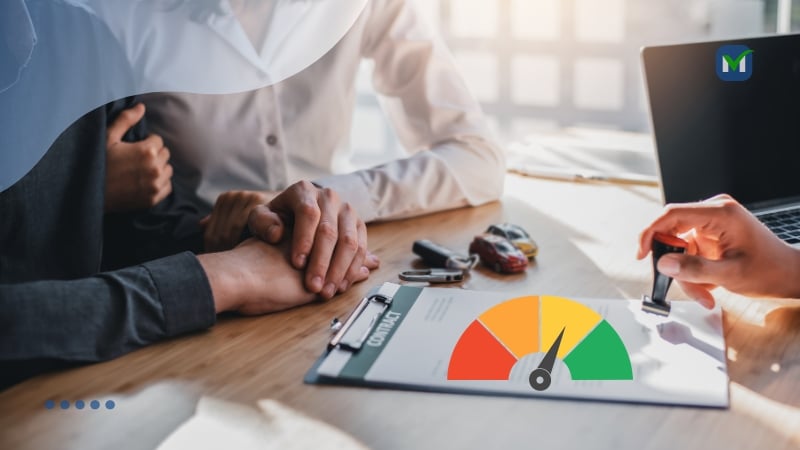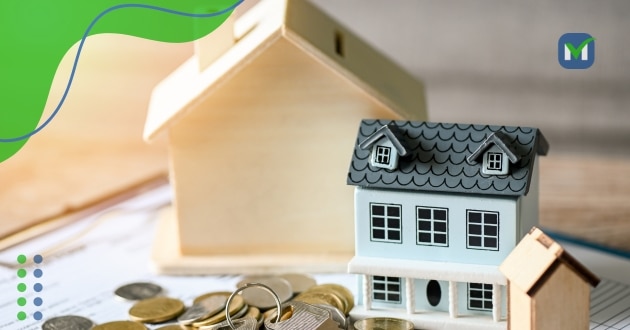Advertisements
Loans for people with poor credit are a crucial financial tool for individuals who face challenges accessing traditional loans due to a low credit score. In an ideal world, everyone would have a stellar credit score, granting them easy access to financial products with low-interest rates and favorable terms. However, life circumstances, unexpected events, or even mistakes in managing finances can lead to a damaged credit score, limiting one’s financial options.
For individuals with a low credit rating, getting approved for loans from conventional lenders like banks or large financial institutions can be difficult, if not impossible. That’s where loans for people with poor credit come into play.
These specialized loans provide a viable solution for those who need access to funds despite their less-than-perfect credit history. Such loans typically offered by alternative lenders who understand that a low credit score doesn’t necessarily reflect someone’s current financial capability or responsibility.
Moreover, loans tailored for those with poor credit scores often have more lenient qualification criteria. They prioritize factors such as income stability, employment history, and sometimes even the borrower’s future earning potential, instead of just focusing on past credit issues. However, this accessibility comes at a cost—borrowers typically face higher interest rates and shorter repayment terms compared to those with good credit.
Understanding Loans for People with Poor Credit
Loans for people with poor credit specialized financial products designed to provide access to credit for individuals who have low credit scores. Traditional lenders, such as banks and credit card companies, often reject loan applications from people with poor credit due to the higher risk they pose.
Fortunately, a variety of alternative lenders have stepped in to cater to this segment of borrowers. These loans come with certain trade-offs, often including higher interest rates and stricter terms, but they can be a crucial lifeline for those in need of funds.
What Constitutes Poor Credit?
Before diving into the specifics of loans for people with poor credit, it’s essential to understand what exactly constitutes a “poor credit” score. Credit scores are typically measured on a scale of 300 to 850, with higher numbers reflecting better creditworthiness.
However, it’s important to note that different lenders may have varying definitions of what qualifies as poor credit. While some might see a score below 600 as risky, others might only flag scores under 550.
Poor credit is often the result of various financial missteps, such as missed payments. High credit utilization, defaulting on loans, or even filing for bankruptcy. These actions signal to lenders that an individual may struggle to repay future debts, which increases the lender’s perceived risk.
Moreover, limited credit history or a lack of any credit history can also lead to a lower score. When a lender has no track record of how a borrower manages credit. They are more cautious and may offer less favorable terms, if they offer a loan at all.
Transitioning from understanding what a poor credit score is. It’s also crucial to realize how it affects one’s ability to secure financing. Borrowers with low credit scores are often denied traditional loan products, such as low interest personal loans, which typically reserved for individuals with excellent credit.
Instead, those with poor credit offered loans with higher interest rates, as lenders attempt to offset the increased risk. This makes borrowing more expensive, even for essential purchases or emergencies.

Types of Loans for People with Poor Credit
There are several different types of loans for people with poor credit, each with its own set of terms, advantages, and disadvantages. Understanding the various types can help you choose the one that best fits your needs.
- Personal Loans: Personal loans for people with poor credit are unsecured loans that do not require collateral. These loans can be used for various purposes, such as consolidating debt, covering medical expenses, or financing major purchases. Because they unsecured, they typically come with higher interest rates than secured loans.
- Secured Loans: Secured loans require the borrower to offer an asset, such as a car or home, as collateral. Because the lender has the security of an asset, they may offer lower interest rates compared to unsecured loans.
- Payday Loans: Payday loans short-term, high-interest loans designed to be repaid with your next paycheck. These loans can provide quick cash in emergencies, but they come with extremely high fees and interest rates. Often leading borrowers into a cycle of debt.
How to Qualify for Loans with Poor Credit
While it’s true that loans for people with poor credit tend to have more lenient approval requirements. There are still steps you can take to increase your chances of securing a loan with favorable terms.
- Check Your Credit Report: Before applying for any loan, it’s crucial to check your credit report. Errors in your report could be dragging your score down unnecessarily. Even a slight boost to your credit score could improve your loan terms.
- Consider a Co-Signer: If your credit score is too low to qualify for a loan on your own. Having a co-signer with good credit can increase your chances of approval. A co-signer agrees to take responsibility for the loan if you fail to make payments. Which reduces the risk for the lender.
- Shop Around for the Best Lender: Not all lenders created equal. Some specialize in offering loans for people with poor credit, while others may impose overly harsh terms. Take the time to compare multiple lenders, looking not just at interest rates. But also at fees, repayment terms, and customer service.
- Show Proof of Income: Lenders want to see that you have a stable source of income. Even if your credit score is low. Be prepared to provide documentation such as pay stubs, tax returns. Or bank statements that show you have the means to repay the loan.
The Advantages of Loans for People with Poor Credit
While loans for people with poor credit may come with higher interest rates and less favorable terms than traditional loans, they offer several significant advantages for borrowers in need.
- Access to Needed Funds: For many people with poor credit, traditional loans are simply not an option. These specialized loans provide access to funds that can be used for emergency expenses, medical bills, or other urgent financial needs.
- Opportunity to Improve Credit Score: One of the biggest advantages of taking out a loan. Even with poor credit, is the opportunity to rebuild your credit. By making regular, on-time payments, you can gradually improve your credit score. Opening the door to better loan terms in the future.
- Flexible Terms: Many lenders that specialize in loans for people with poor credit offer flexible terms that can be tailored to the borrower’s financial situation. Whether you need a longer repayment period or a lower monthly payment. You may be able to negotiate terms that work for you.
- Quick Approval: Because these loans are designed for people in urgent need of funds, they often come with quick approval processes. Some lenders can approve and disburse funds within 24 to 48 hours. Making them a good option for those facing time-sensitive financial emergencies.
The Disadvantages of Loans for People with Poor Credit
While there are benefits to loans for people with poor credit, they also come with their own set of risks and disadvantages.
- High Interest Rates: Because lenders see borrowers with poor credit as high risk, they compensate by charging higher interest rates. This can significantly increase the overall cost of the loan, especially if you opt for a longer repayment term.
- Predatory Lenders: Unfortunately, some lenders prey on individuals with poor credit, offering loans with exorbitant fees. Unclear terms, and unrealistic repayment schedules. Always read the fine print, and if something seems too good to be true, it probably is.
- Risk of Further Debt: Taking out a loan when you’re already struggling financially can lead to a vicious cycle of debt. If you’re not careful, you could find yourself taking out another loan to repay the first. Leading to even more financial stress.
Conclusion
In conclusion, loans for people with poor credit serve as an essential financial tool for individuals who find themselves in challenging credit situations. While these loans often come with higher interest rates and stricter terms compared to loans offered to those with excellent credit. They provide access to much-needed funds for emergencies, debt consolidation, or other financial needs.
Transitioning from traditional lending options, these loans present a viable path for people with poor credit scores to re-establish their creditworthiness and work toward better financial health.
Moreover, it’s important to understand that not all loans for poor credit created equal. By carefully comparing various loan types—such as secured loans, unsecured personal loans, and credit union loans—you can find an option that suits your specific financial needs.
Additionally, as mentioned earlier, being aware of potential risks, such as predatory lending or excessive fees, can help you make smarter borrowing decisions.
Furthermore, these loans offer more than just immediate financial relief. With every timely repayment, you’re taking a positive step toward improving your credit score. Over time, this can open the door to more favorable financial products. Such as low-interest personal loans, helping you secure a more stable financial future.
If you’re looking for additional resources or support in managing credit, the U.S. government offers several helpful tools and guidelines. For example, the Federal Trade Commission (FTC) provides valuable information on loans and managing credit, which can be accessed on their official website. This site includes tips on how to avoid predatory lending, manage debt, and improve your credit score.





